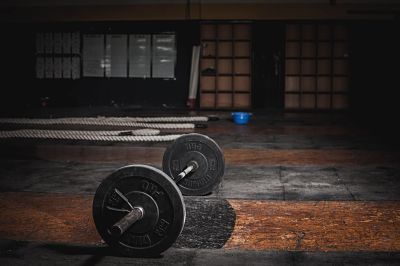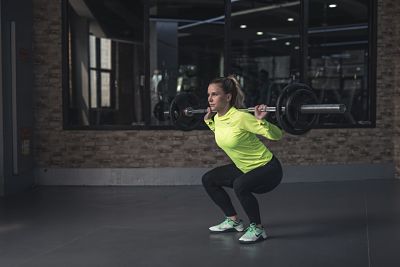Most runners want to run faster, further and longer. But, could neglecting something as simple as strength training be holding you back from all of these things?
Oliver McCarthy, the Head Coach at McCarthy Fitness and Wellbeing, explains who might benefit from strength training and how you can make it part of your weekly routine...
What does the research say about strength training for runners?
Far too commonly, there seems to be a fear of strength training amongst endurance athletes.
I don’t want to get slower, I don’t want to get heavy.
This misconception of “bulking up" when you weight train is somewhat misplaced and rather than being detrimental to your running, it could be the addition you’re looking for to see your performance improve.
A meta-analysis (analysis of many studies) by Lum and Babosa (2019) showed that weight training actually had a positive effect on endurance performance in Olympic-based timed sports (i.e. running, cycling, rowing).
The most interesting finding was that athletes who incorporated heavy weight training actually reaped the most benefits.
A separate review of the effects of strength training on the physiological determinants of middle and long distance runners (Blagrove, Howaston and Hayes, 2017) also showed that run economy and time trial performance were both improved when strength training was included. They also noted that the body composition of the runners was not negatively impacted by this type of training and they concluded that strength training is “likely to provide benefits to the performance” of runners.

Why would you consider strength training?
The studies suggest that strength training improves running economy and maximal sprint speed.
Simply put; the stronger you get, the more force you can produce. If you can produce more force with each step then you can improve your overall running economy (i.e. the amount of energy utilised when running at aerobic intensity). Not to mention that you can also decrease the risk of injury.
Strength training should focus on 'low volume', so rather than gaining muscle and getting excessively buff, you’ll actually get stronger whilst also gaining all of the benefits for running.
To make a significant difference, you need to lift heavy weights for 3-6 reps for 3-6 sets, taking long rests between.
Remember, strength training should feel nothing like endurance training, so you shouldn’t feel out of breath or sweat as much. Runners often get this wrong by going too high with their reps (for example, pushing 12+ reps for 3-4 sets), not training heavy enough and not taking enough rest between sets.
You’ll tick the box for “endurance work" or conditioning when out running so there's no need to replicate this again in the gym.
If you add strength training to your routine then you may well see an increase in performance, especially over shorter distances (5-10km.)
What type of strength training should runners consider?
My advice would be to seek the help of a professional. A session or two with a personal trainer to work on form and to get the movement right is a great starting point.
If this isn't an option, then simply choose 1 or 2 of the following full body movements to focus on initially:
- Squat
- Reverse lunge
- Hip thrust

The above movements will strengthen the key muscles used when running, whilst also stimulating other muscles in the body which help keep you stable and in a good running position.
If you’re new to strength training, videos will be your friend here in both a learning and feedback capacity. Watching videos on YouTube can be a great tool to learn from.
Record your reps to get feedback on your form and compare the two to see your progression. If you’re still looking for a helping hand, feel free to tag me on Instagram (@olliewmccarthy) and I can provide some pointers.
As an example of how your strength training session should look:
- Take 1-2 warm up sets to get a feel for the movement before loading with weight
- Start with 3 sets of 5 reps per movement to begin
- Try to keep the same weight throughout
- The last set should feel challenging
- Rest for 2-3 minutes between each set
You should leave the session feeling like you've done something but not wiped out. Even 1 session per week is enough to see significant improvements and the longer it remains part of your training, the more benefits you'll see.
Give it a try and let me know how you get on!
